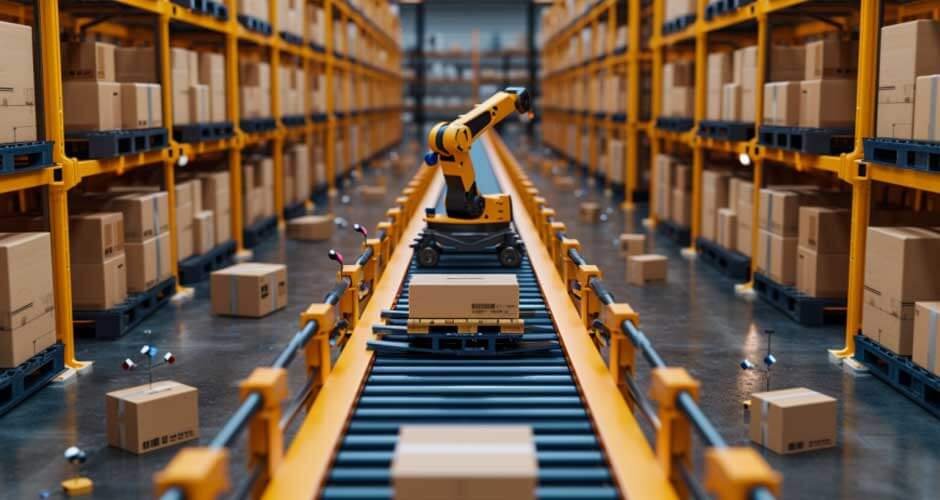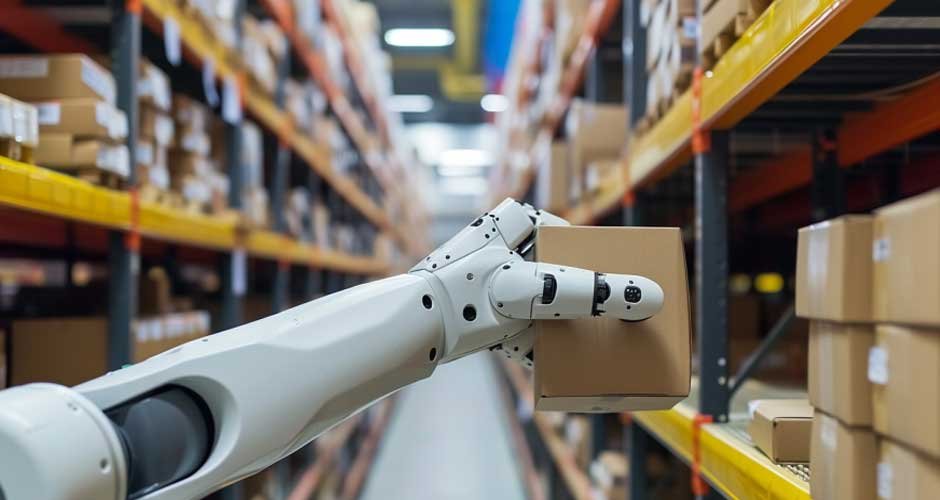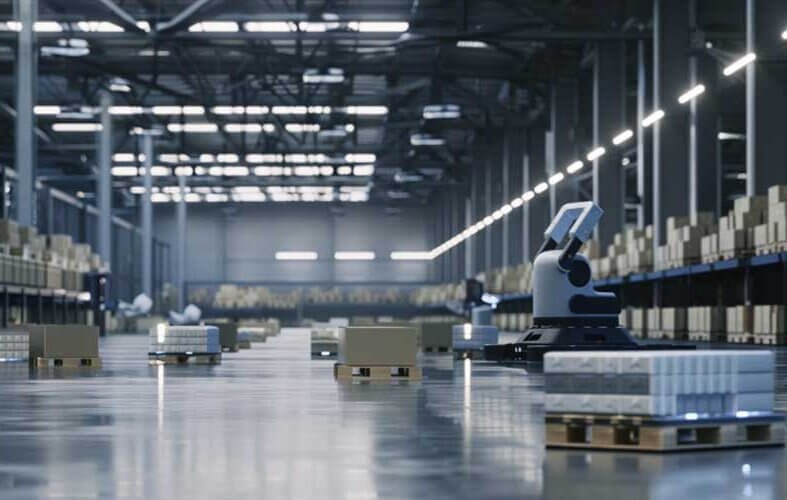Welcome to the warehouse of the future, where robots don’t just beep and whirr—they practically dance through aisles, and AI doesn’t just assist—it anticipates your needs before you even realize them.
Warehouse automation is no longer a distant dream; it’s the dazzling reality transforming the logistics landscape. As businesses compete to outpace one another in efficiency and innovation, warehouse automation systems are driving a shift in warehouse operations.
In this article we dive into the key trends shaping warehouse automation’s future, making logistics smarter, faster, and even a bit more fun.
1. Autonomous Mobile Robots (AMRs)
Autonomous Mobile Robots (AMRs) are revolutionizing warehouse logistics with their ability to navigate complex environments independently. Unlike traditional automated guided vehicles (AGVs) that follow fixed paths, AMRs use advanced sensors and AI to adapt to dynamic warehouse settings. This flexibility allows them to optimize routes, avoid obstacles, and work alongside human workers seamlessly. AMRs can handle a variety of tasks, from transporting goods to assisting in order picking, significantly enhancing efficiency and reducing labor costs.
2. Artificial Intelligence and Machine Learning Integration
AI and machine learning are becoming integral to warehouse operations, driving smarter and more efficient processes. These technologies enable predictive analytics, allowing warehouses to anticipate demand, optimize inventory levels, and prevent equipment failures before they occur. For instance, AI-powered systems can analyze historical data to forecast demand spikes, ensuring that inventory is always at optimal levels.
3. Advanced Warehouse Management Systems (WMS)
Modern Warehouse Management Systems (WMS) are cloud-based solutions that offer real-time visibility and control over warehouse operations. These systems integrate seamlessly with other enterprise software, providing a unified platform for managing inventory, order processing, and shipping.
Additionally, cloud-based WMS solutions are scalable, allowing businesses to adapt to changing demands without significant upfront investment.

4. Collaborative Robots (Cobots)
Cobots are designed to work alongside human workers, enhancing productivity and safety in warehouses. Unlike traditional industrial robots that operate in isolation, cobots are equipped with advanced sensors and AI to interact safely with humans.
They can take over repetitive tasks such as sorting and packing, freeing up human workers to focus on more complex activities.
5. The Industrial Internet of Things (IIoT)
The IIoT is transforming warehouses into smart environments where devices and systems communicate and collaborate in real-time. By connecting various warehouse components, IIoT enables better visibility and control over operations. For example, IoT-enabled sensors can monitor the condition of equipment and inventory, providing real-time updates to managers.
6. Robotics-as-a-Service (RaaS)
The RaaS model is gaining traction as a cost-effective solution for implementing robotics in warehouses. Instead of purchasing expensive robotic systems outright, businesses can now subscribe to robotic services.
This model reduces the financial burden of initial investments and allows companies to scale their automation efforts according to demand. RaaS providers take care of maintenance and upgrades, ensuring that warehouses always have access to the latest technology.
7. Automated Storage and Retrieval Systems (AS/RS)
AS/RS systems are designed to optimize storage density and improve retrieval speeds. These systems use robotic arms and shuttles to store and retrieve items from high-density storage racks, significantly reducing the time needed for order fulfillment.
AS/RS systems are particularly beneficial for e-commerce and omnichannel retailers who need to manage large volumes of inventory and fulfill orders quickly.
8. Voice Picking Technology
Voice-picking technology is streamlining order fulfillment by allowing workers to receive instructions and confirm tasks using voice commands. This hands-free approach improves accuracy and efficiency, as workers no longer need to consult paper lists or handheld devices.
Voice-picking systems guide workers through the picking process, reducing errors and speeding up order fulfillment.
10. Sustainability and Green Logistics
As environmental concerns grow, warehouses are adopting sustainable practices to reduce their carbon footprint. Automation plays a key role in these efforts by optimizing energy usage and minimizing waste.
For example, energy-efficient conveyor systems and automated lighting controls help reduce energy consumption. Additionally, robotic systems can be programmed to follow eco-friendly practices, such as optimizing routes to minimize fuel usage.

Embracing the Future
The future of warehouse automation is bright, with cutting-edge technologies driving unprecedented levels of efficiency, accuracy, and sustainability.
By embracing these trends, businesses can stay competitive in an increasingly fast-paced and demanding market.
As we move forward, the integration of AI, robotics, and IoT will continue to transform warehouses into highly efficient and adaptive hubs of productivity, setting new standards for the logistics industry.








